Connecting Antarctic Science to Children
CAPE ROYDS, ROSS ISLAND, ANTARCTICA– Most of the time while we are working with penguins in Antarctica, we are in the field at Cape Royds. We live in a tent and sleep on the ground near the breeding colony and it is a magical place for me. As far as we can see in any direction there is no sign of life except the penguins and us. Across 60 miles of frozen ocean is the Royal Society Range on the continent of Antarctica; we are on Ross Island frozen solid in the Ross Sea.
As a backdrop to our camp and the colony is Mt Erebus, a true living, breathing, belching, active volcano whose plume is only visible when the atmospheric conditions are just right.
Days will pass and we will not see another human being nor hear any sound other than our own and the birds. No, I do not get lonely, and I look forward all year to this two month time frame when I am given the gift of living at the edge of world with these remarkable creatures who adapted themselves to this harsh environment so they could have the place to themselves.
It is all about the science, and my job is connecting it to classrooms across the US and around the world, sharing the experience of Antarctica and the lives of these birds with children and others who may only see penguins in zoos. Many people do not have a sense of Antarctica and do not understand the role this large continent plays in our ocean and climate systems. Most will never set foot on this, the most remote place on Earth.
Many people do not realize how pristine and unspoiled the entire continent is. It is the only continent that has never been continuously populated by people, and except for the northern tip of the Antarctica peninsula, there are no land plants or animals above the micro level. The southern ocean that surrounds Antarctica is the last unspoiled ocean on the planet. If we are to maintain the unspoiled, untouched nature of this extraordinary place, people must have a connection to it and care about it. Our project reaches out to children and adults in an effort to create that connection and sense of stewardship.
Teachers in classrooms all across the country use our website to engage students about Antarctica. We have developed classroom activities, an educational DVD, webisodes, background information for teachers, and many activities designed to engage children in penguins, Antarctica and global climate change. One of our projects is about postcards. Many children have never received a piece of mail let alone a postcard from a foreign country, let alone a postcard from Antarctica. We have received and sent back over 10000 handmade penguin postcards from children around the world. Here are some examples.
Every year we select 6 breeding pairs (one from each pair is a banded bird) to follow along on a daily basis allowing children in classrooms a chance to be field biologists. They keep a field journal, recording the dates the eggs are laid, when the chicks hatch, how long the female or male is on the nest, how long the foraging trips are and other factors effecting the chicks growth. We hope some of these young biologists will make education and career choices that will propel them into the science and engineering fields. Here is an example of these nests from the beginning of the season to the end of the season.
Other students connect with us by making a flag to fly at the research station.
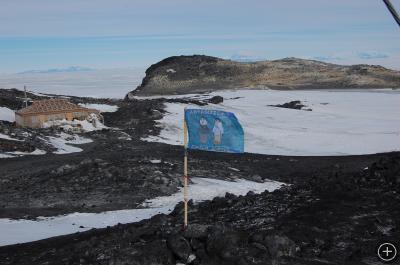
This flag from students in Maine serves as a wind speed and direction indicator for our penguin cam.
Some send us questions about penguins, Antarctica and the Polar regions, we have answered thousands.
We have also produced an educational DVD about how penguins are coping with global climate change. You can order a copy from our website penguinscience.com.
Yes it is about the science, and my job is to share that science with the world.
To see the webisodes visit http://www.penguinscience.com/media/video/webisodes.php.
To learn more about the postcard project, design a flag or other classroom activities visit http://www.penguinscience.com/classroom_home.php.



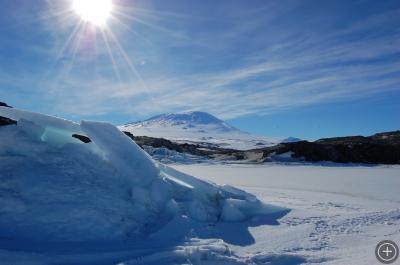
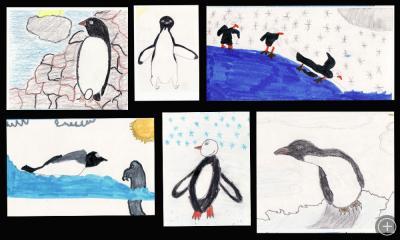
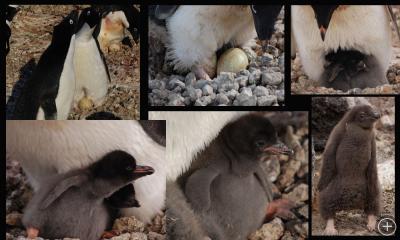
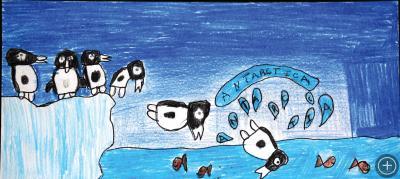



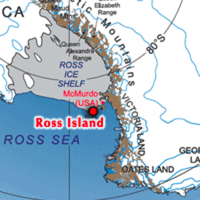





I would like to include a children’s story from antartica. Could you send me a place to look.? I am a storiyteller and would like to do a program of the continents and have a tale for this beautiful place.
I look forward to hear from you.
I’m totally amazed by your article! I personal wish that at some point in my life i’m able to spend time in isolated areas of the world where only nature speaks to you. I would imagine you’ve been to the Gorgian Islands (a remote birish outpost) near Andartica. In any case enjoy the freedom! I look forword to reading more of this.
http://www.dibicorp.com – my gps site :) come leave a comment… this is somewhat unrelated though.